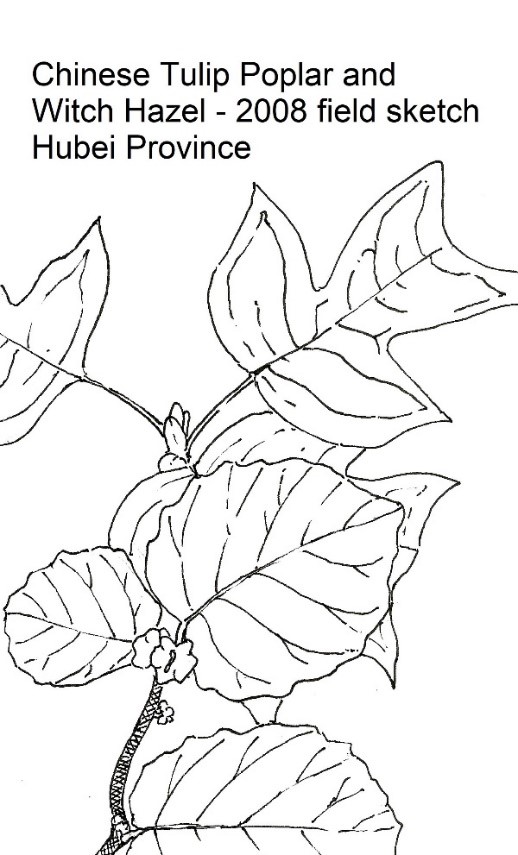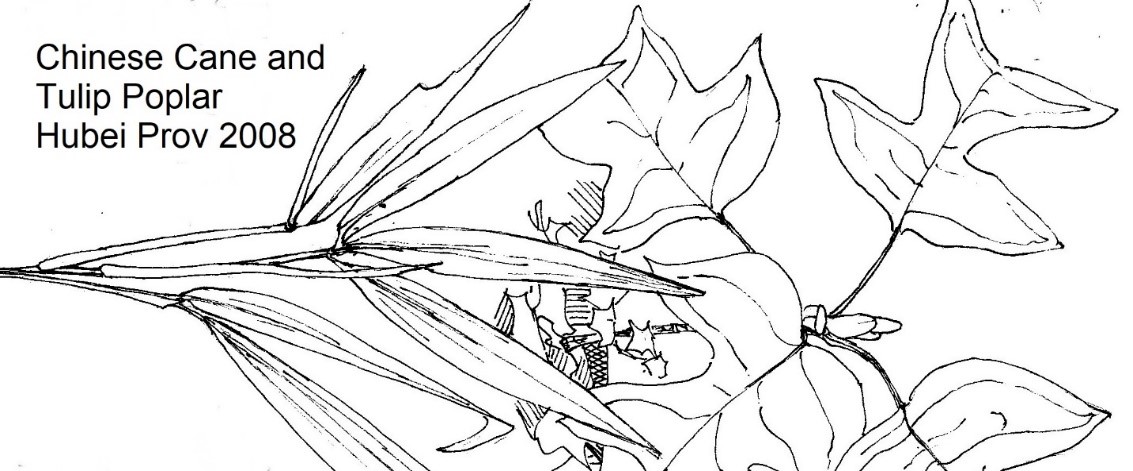By Fred Paillet, Ozark Society Education Chair
The title of this piece prompts several questions. Who was Asa Gray, what is a disjunct, and why does he have one named after him? How did I manage to encounter his disjunct and what made it so personal? It all goes back to my earliest outdoor experiences in the woods of rural Connecticut. I grew up in a family that spent a lot of time in the outdoors fishing, hunting and just plain enjoying the scenery. When not actively out there, we were usually reading about the natural world in general, and especially the great north woods where my French-Canadian ancestors came from. Those interests eventually blossomed into a career as a geoscientist with the expectation that such a life would lead me to a career of outdoor adventure. And, so it did. I was delighted to have a job based out of Colorado with the Rocky Mountains at my doorstep, with projects all over the mountain west and even in Hawaii. But something was missing.
This was apparent as I became used to the rather monotonous conifer forests of the American west and northern Canada. Ranks of Engelmann spruce or lodgepole pine just did not have the variety of the woods I grew up in. Meadows full of wildflowers helped ease the monotony of the scenery. But I missed the textures and seasonal variation of the eastern deciduous forest. The attributes of our Ozark forests include features I couldn’t find in the mountain west. Things like the odor and crunch of thick leaf litter underfoot, the intricate pattern of moss and lichens on the infinitely variable bark textures of deciduous trees, and the carpet of spring ephemeral wildflowers that appear in those magical early spring months when sunlight streams through the bare branches of leafless canopies overhead. Golden aspens in Colorado were scenic but could not rival the variable palette of the color in our eastern fall foliage. So, it came to be that the Ozarks would be my adopted retirement home. This was as close to my grandchildren in Colorado as I could get and still find an eastern forest biome with a real outdoor environment and an attachment to a major research university.
Just enjoying our Ozark scenery ought to be enough for most folks, but my inner scientist always seemed to want to sneak out. That was especially so when I started to realize how unique our biologically diverse Ozark forests are in comparison to other forest environments around the world. Forests dominated by a single species of pine or spruce look about as monotonous as in Colorado whether they grow in the interior of Alaska or the suburbs of Novosibirsk. Those places where fire or other disturbance have replaced the conifers with aspen or birch add a little more variety but it’s still a mostly uniform forest with ranks of the similar trees seen in echelon. In Siberia, spruce is replaced by larch to similar effect except for a few days in the autumn when golden needles are about to be shed to provide a little extra color to the landscape. The big question for biologists was why there should be a few places with wonderfully diverse forests at temperate latitudes when such diversity was supposed to be the exclusive property of tropical rain forests. Why should places like the Ozarks be blessed with a dozen species of oak growing alongside several maples, hickories, ashes and all the others while most temperate forests are far less diverse?

That’s where Asa Gray (1810-88) comes in. He was a Harvard botanist charged with the cataloging of specimens brought back from around the world by his extensive network of field collectors. He noticed that explorers active in southeastern China were returning specimens that looked amazingly like species growing in our own deciduous biome. He received samples of tulip poplar, hickory, black gum, sweetgum, beech, witch hazel, and oak. The similarity with eastern American species was astounding and came to be known as the Asa Gray disjunct. That is, disjunct in the sense of a widely separated pair of strikingly similar botanical communities. Geoscientists now know how this originated in a world subjected to drifting continents and cycles of climate change. Fifty million years ago North America, Europe and Asia were all clustered around the north pole in a much warmer world with a single continuous forest extending around the top of the globe. Paleontologists call this the Arcto-Tertiary Forest. We think of deciduous trees as dropping leaves to avoid winter cold, but geologists think the deciduous habit may have developed to deal with winter darkness north of the arctic circle and not frigid temperatures. Photosynthetic reaction can operate in reverse (biologists call it respiration) providing a liability for leaves without benefit of light, so prolonged exposure to darkness would be a real problem for trees in a warm arctic. Recent investigators have been astounded to find fossil maple and oak leaves on Elsmere Island deposited at about 80 degrees north latitude where there is nothing but ice and sparse tundra today. For reference, read about the desperate cold and starvation experienced by the Greely expedition (Labyrinth of Ice by Buddy Levy) when stranded on Elsmere Island for three consecutive winters after 1881 to get a sense of how different the world was in the Eocene era. In the fifty million years since the Eocene period, climate change and glacial periods have greatly diminished the diversity of forest communities everywhere between two isolated outliers of that once widespread ancient forest.

That great difference between Eocene and modern global temperatures belies the fact that the parameters driving Eocene climate were not so different from those that prevail today – except for the greenhouse-gas budget in the atmosphere at that time. Because the energy output of the sun’s fusion furnace slowly increases as the radius of active combustion spreads outward over time, the solar power warming our atmosphere was slightly lower in the warmer Eocene. The distribution of land masses was not all the different, too, with the Atlantic already well on its way to its present width. The ocean straits between North and South America had yet to close and ice cover had not made Antarctica the solar energy reflector it is today. Those relatively minor differences combined with the great difference in greenhouse gas content of the atmosphere clearly had profound consequences for life as it existed on our planet at that time. Is there a lesson here for us today?
My personal brush with Asa Gray’s disjunct came in 2008 during a scientific exchange with Prof Zehao at the University of Beijing. We visited his field site in Hubei Province where he has carefully recorded all the trees and shrubs growing on his study plots. On my visit we saw hemlock, tulip poplar, magnolia, and chestnut, then several different beech, oak, and hornbeam species, with hazel, witch hazel, and a bamboo looking like our big river cane in the understory. Many of these were hardly different from related specimens we see in Arkansas today. Instead of grape vines interlaced in treetops, we saw kiwi vines with fruit hanging just out of reach above us. That made the fieldwork seem a little more exotic – along with the chicken heads and feet served in our Lo Mein dinner. This was wonderful opportunity to see the dry academic teachings of geological theory related to the so distant past brought to real life in the here and now. That’s what made it personal.
